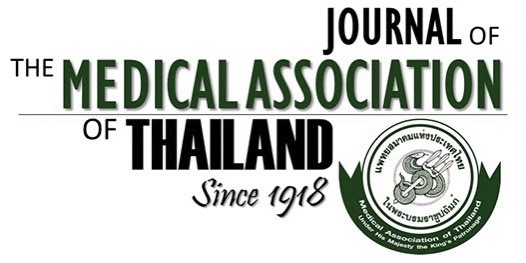Indications and Outcomes of Penetrating Keratoplasty at a Tertiary Care Hospital in Northern Thailand
Khotcharrat R, MD¹, Sawatdiwithayayong J, MD¹, Bhoopat T, MD¹, Ngowyutagon P, MD²
Affiliation : ¹ Department of Ophthalmology, Faculty of Medicine, Naresuan University, Phitsanulok, Thailand ² Department of Ophthalmology, Faculty of Medicine Siriraj Hospital, Mahidol University, Bangkok, Thailand
Objective: To inquire into the causative diseases for corneal transplantation, treatment outcomes, and the prognostic factors
influencing post-operative outcomes.
Materials and Methods: A retrospective review of the medical records of the patients that underwent penetrating keratoplasty between September 1, 2004 and December 31, 2009 was done.
Results: Corneal transplantation was done in 51 eyes of 51 patients with a mean age of 60.9±14.3 years (range from 25 to 88 years old). The most common indication was for optical purpose (82.4%) in patients diagnosed with bullous keratopathy (n=14, 25.9%), followed by corneal scar (n=10, 18.5%). The pre-operative mean visual acuity was 2.3±0.7 Log MAR, and post- operative mean visual acuity was 1.6±0.9 Log MAR. The mean of visual improvement was 0.7±0.8 Log MAR (p=0.001). The graft failure rate was 48%, caused by irreversible graft rejection, recurrent infection, corneal ulcer on graft, graft perforation, and late endothelial failure. The risk of graft failure was significantly higher in patients with pre-existing glaucoma, re-grafting for previous graft failure, and secondary post-operative glaucoma.
Conclusion: Penetrating keratoplasty remains the effective treatment in many corneal conditions. Bullous keratopathy and corneal scar are the major indications for optical purpose.
Keywords : Penatrating keratoplasty, Indication for penetrating keratoplasty, Graft failure



